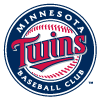This article is part of our MLB Barometer series.
Welcome to overreaction season! There's no better time than the start of baseball season, when we're suddenly overloaded with far more games than we could possibly keep up with after five months without meaningful games. That's true even if your favorite team isn't the Phillies, who suddenly have the best pitching staff of all time, holding a strong Atlanta lineup to just three runs in three games. Red Sox fans may want to give up on the season already, though, as there's surely no coming back from an opening weekend sweep against the mighty Orioles.
It's a wonderful feeling to be able to discuss real games and real stat lines again after spending months mostly discussing hypotheticals. Altering the opinions we had of players before the season began based on just three or four games is almost always unwise, however. Even stats that stabilize fairly quickly like strikeout rate and walk rate are a long way from becoming reliable.
There are still a few things worth paying attention to, however. Pitcher velocity is perhaps the most significant one. It only takes a single pitch thrown at 100 mph to prove that a pitcher has the ability to throw 100 mph. Even one game can be enough to indicate that they have the ability to do so consistently. This page tracks every pitcher's velocity change and is already worth checking out.
The most important things we can learn this early in the season are role changes and clarifications. Plenty of managers
Welcome to overreaction season! There's no better time than the start of baseball season, when we're suddenly overloaded with far more games than we could possibly keep up with after five months without meaningful games. That's true even if your favorite team isn't the Phillies, who suddenly have the best pitching staff of all time, holding a strong Atlanta lineup to just three runs in three games. Red Sox fans may want to give up on the season already, though, as there's surely no coming back from an opening weekend sweep against the mighty Orioles.
It's a wonderful feeling to be able to discuss real games and real stat lines again after spending months mostly discussing hypotheticals. Altering the opinions we had of players before the season began based on just three or four games is almost always unwise, however. Even stats that stabilize fairly quickly like strikeout rate and walk rate are a long way from becoming reliable.
There are still a few things worth paying attention to, however. Pitcher velocity is perhaps the most significant one. It only takes a single pitch thrown at 100 mph to prove that a pitcher has the ability to throw 100 mph. Even one game can be enough to indicate that they have the ability to do so consistently. This page tracks every pitcher's velocity change and is already worth checking out.
The most important things we can learn this early in the season are role changes and clarifications. Plenty of managers went into the season having not named an official closer, but they can't help but provide some clarity once the games begin. Receiving one save chance doesn't make a reliever a true closer, but a player who gets a team's first two opportunities of the year should be seen as one under most circumstances. Similarly, it only takes a few games to determine who's likely to be in the lineup for most games and who is likely to be stuck in a platoon. The risers and fallers this week, and likely for the next few weeks, will be mostly based on roles rather than stats, though a few particularly noteworthy early statlines are worth acknowledging.
Risers
 Shohei Ohtani, SP/DH, Angels: Ohtani's pitching debut may have ended poorly Sunday, as he walked two of his last three batters to give him five on the day before leaving following a collision at home plate as two runners came around to score on a dropped third strike, but he's unconcerned about any serious injury and will kick off the first group of risers of the regular season nonetheless. He's a riser partially because of his performance, as he's homered twice and stolen a base on the offensive side while striking out seven and allowing just one earned run in his first outing on the mound. He's also filled the Statcast leaderboard, hitting the hardest homer of the young season (115.2 mph) and throwing the fastest pitch of any starting pitcher (101.1 mph) in Sunday's game. He's rising primarily based on his early-season usage, however, as he was allowed to hit the day before he pitched Saturday and was also allowed to bat second as the starting pitcher Sunday, with the Angels forgoing the DH. It hasn't been a perfect start – his 37.5 percent strikeout rate as a hitter and 22.7 percent walk rate as a pitcher are both concerning numbers –but it looks as clear as ever that we're set to get the full Shohei Ohtani experience this season.
Shohei Ohtani, SP/DH, Angels: Ohtani's pitching debut may have ended poorly Sunday, as he walked two of his last three batters to give him five on the day before leaving following a collision at home plate as two runners came around to score on a dropped third strike, but he's unconcerned about any serious injury and will kick off the first group of risers of the regular season nonetheless. He's a riser partially because of his performance, as he's homered twice and stolen a base on the offensive side while striking out seven and allowing just one earned run in his first outing on the mound. He's also filled the Statcast leaderboard, hitting the hardest homer of the young season (115.2 mph) and throwing the fastest pitch of any starting pitcher (101.1 mph) in Sunday's game. He's rising primarily based on his early-season usage, however, as he was allowed to hit the day before he pitched Saturday and was also allowed to bat second as the starting pitcher Sunday, with the Angels forgoing the DH. It hasn't been a perfect start – his 37.5 percent strikeout rate as a hitter and 22.7 percent walk rate as a pitcher are both concerning numbers –but it looks as clear as ever that we're set to get the full Shohei Ohtani experience this season.
 Yermin Mercedes, DH, White Sox: I mentioned in the introduction that I'd be trying to avoid overreacting to tiny-sample statlines. While it's true that Mercedes' eight consecutive hits to start the season is what thrust him into the spotlight, his spot here is due as much to his apparent role as to his .643/.643/1.000 slash line. Mercedes seemed to be very much an afterthought on the White Sox's Opening Day roster, stuck as the third catcher behind Yasmani Grandal and Zack Collins, and stuck as the third designated hitter behind Andrew Vaughn and Collins. Even the news that Vaughn would be spending time in left field didn't seem to move the needle much for Mercedes, who still seemed buried on the depth chart. As it turns out, Mercedes has started three games thus far, while Collins and Vaughn have each started just twice. Perhaps we should have seen this coming. Mercedes, a former independent leaguer, certainly doesn't have nearly the same pedigree as Vaughn, the 2019 third-overall pick, but he does have a track record of success in the upper minors. Vaughn hadn't played a game above High-A before this season, while Mercedes hit .317/.388/.581 in the two highest levels of the minors in 2019. Vaughn will surely get his opportunities eventually should he earn them, but Mercedes has deserved his chances thus far and should remain in the lineup on a regular basis until his performance dips.
Yermin Mercedes, DH, White Sox: I mentioned in the introduction that I'd be trying to avoid overreacting to tiny-sample statlines. While it's true that Mercedes' eight consecutive hits to start the season is what thrust him into the spotlight, his spot here is due as much to his apparent role as to his .643/.643/1.000 slash line. Mercedes seemed to be very much an afterthought on the White Sox's Opening Day roster, stuck as the third catcher behind Yasmani Grandal and Zack Collins, and stuck as the third designated hitter behind Andrew Vaughn and Collins. Even the news that Vaughn would be spending time in left field didn't seem to move the needle much for Mercedes, who still seemed buried on the depth chart. As it turns out, Mercedes has started three games thus far, while Collins and Vaughn have each started just twice. Perhaps we should have seen this coming. Mercedes, a former independent leaguer, certainly doesn't have nearly the same pedigree as Vaughn, the 2019 third-overall pick, but he does have a track record of success in the upper minors. Vaughn hadn't played a game above High-A before this season, while Mercedes hit .317/.388/.581 in the two highest levels of the minors in 2019. Vaughn will surely get his opportunities eventually should he earn them, but Mercedes has deserved his chances thus far and should remain in the lineup on a regular basis until his performance dips.
 Cesar Valdez, RP, Orioles: The Orioles didn't name a closer heading into the season, but it seems quite clear Valdez is their guy. Baltimore produced save chances in each of the first two games of the campaign, and Valdez earned both of them, getting the job done both times while striking out two and allowing a total of three baserunners. Tanner Scott, who looked to be one of the top contestants for the role, pitched in the eighth inning on Opening Day. It's worth noting that Shawn Armstrong, another potential ninth-inning option, has been away from the team for the birth of his child, but there's a good chance Valdez holds onto the role until he pitches his way out of it. The 36-year-old could certainly do that, as he doesn't have much of a track record, spending most of the last decade out of affiliated ball entirely while pitching in Mexico, but he's been quite good since returning to the majors with the Orioles last season, posting a 1.10 ERA and 0.73 WHIP in 16.1 innings. No Baltimore closer will be anything but a lower-tier option, as the team isn't expected to produce all that many save chances, but Valdez seems to clear at least that low bar.
Cesar Valdez, RP, Orioles: The Orioles didn't name a closer heading into the season, but it seems quite clear Valdez is their guy. Baltimore produced save chances in each of the first two games of the campaign, and Valdez earned both of them, getting the job done both times while striking out two and allowing a total of three baserunners. Tanner Scott, who looked to be one of the top contestants for the role, pitched in the eighth inning on Opening Day. It's worth noting that Shawn Armstrong, another potential ninth-inning option, has been away from the team for the birth of his child, but there's a good chance Valdez holds onto the role until he pitches his way out of it. The 36-year-old could certainly do that, as he doesn't have much of a track record, spending most of the last decade out of affiliated ball entirely while pitching in Mexico, but he's been quite good since returning to the majors with the Orioles last season, posting a 1.10 ERA and 0.73 WHIP in 16.1 innings. No Baltimore closer will be anything but a lower-tier option, as the team isn't expected to produce all that many save chances, but Valdez seems to clear at least that low bar.
 Julian Merryweather, RP, Blue Jays: The fantasy community has a strange habit of coming to a consensus on a team's bullpen hierarchy even when a team has offered no such clarity. From the date Kirby Yates suffered his elbow injury (March 22) to the end of draft season, Jordan Romano had an NFBC ADP of 165.3, despite the Blue Jays never mentioning him as more than a potential option for saves. Blue Jays relievers have already recorded two saves this season, and they've both gone to Merryweather, who went undrafted in 91 percent of leagues even after Yates' injury. The circumstances of those saves mean we should still be cautious before anointing Merryweather as a true closer, as Romano pitched in a tie game in the ninth inning on Opening Day before Merryweather was brought in to hold a one-run lead in the bottom of the 10th. His second save was far more conventional, however, as Romano pitched a clean eighth inning before handing the ball to Merryweather in the ninth. At the very least, Merryweather appears to be at the front of a committee in Toronto, and it may only take another save chance to declare him the unchallenged ninth-inning man.
Julian Merryweather, RP, Blue Jays: The fantasy community has a strange habit of coming to a consensus on a team's bullpen hierarchy even when a team has offered no such clarity. From the date Kirby Yates suffered his elbow injury (March 22) to the end of draft season, Jordan Romano had an NFBC ADP of 165.3, despite the Blue Jays never mentioning him as more than a potential option for saves. Blue Jays relievers have already recorded two saves this season, and they've both gone to Merryweather, who went undrafted in 91 percent of leagues even after Yates' injury. The circumstances of those saves mean we should still be cautious before anointing Merryweather as a true closer, as Romano pitched in a tie game in the ninth inning on Opening Day before Merryweather was brought in to hold a one-run lead in the bottom of the 10th. His second save was far more conventional, however, as Romano pitched a clean eighth inning before handing the ball to Merryweather in the ninth. At the very least, Merryweather appears to be at the front of a committee in Toronto, and it may only take another save chance to declare him the unchallenged ninth-inning man.
 Mark Melancon, RP, Padres: All four players who have two saves this season weren't their team's clear closer to begin the season. Melancon joins Valdez and Merryweather in that group, which also includes the Rays' Diego Castillo. While the Padres are considered a smart, modern organization like the Rays, they don't share Tampa's apparent disdain for the closer role, with manager Jayce Tingler expressing a preference for a dedicated ninth-inning reliever prior to the start of the season. He declined to note who that reliever would be, but it's pretty clear that it's Melancon. The Padres created save chances in both of their first two games of the season, and both went to Melancon, who allowed just one hit across two scoreless innings. Emilio Pagan, who earned some closer buzz in late March, pitched in the seventh inning on Thursday and in the eighth on Friday, while Drew Pomeranz pitched the eighth on Opening Day. There's an argument to be made that the age-36 version of Melancon is the least talented pitcher of that trio, but the job couldn't be more clearly his at the moment, and it should be one of the better closer jobs in the league given how many games the Padres project to win.
Mark Melancon, RP, Padres: All four players who have two saves this season weren't their team's clear closer to begin the season. Melancon joins Valdez and Merryweather in that group, which also includes the Rays' Diego Castillo. While the Padres are considered a smart, modern organization like the Rays, they don't share Tampa's apparent disdain for the closer role, with manager Jayce Tingler expressing a preference for a dedicated ninth-inning reliever prior to the start of the season. He declined to note who that reliever would be, but it's pretty clear that it's Melancon. The Padres created save chances in both of their first two games of the season, and both went to Melancon, who allowed just one hit across two scoreless innings. Emilio Pagan, who earned some closer buzz in late March, pitched in the seventh inning on Thursday and in the eighth on Friday, while Drew Pomeranz pitched the eighth on Opening Day. There's an argument to be made that the age-36 version of Melancon is the least talented pitcher of that trio, but the job couldn't be more clearly his at the moment, and it should be one of the better closer jobs in the league given how many games the Padres project to win.
 Jose Berrios, SP, Twins: While I'm mostly trying to avoid performance-based risers and fallers this early in the season, an exemption should be made for Berrios given his dominant first outing. He held the Brewers hitless through six innings Friday, allowing just a single baserunner when he hit Keston Hiura with a pitch in the fifth inning. Manager Rocco Baldelli didn't want to let him even flirt with a no-hitter, pulling him after six innings and just 84 pitches, but it was a dominant outing nonetheless. Arguably just as impressive as his zero hits were his 12 strikeouts, good for a 63.2 percent strikeout rate. His velocity was up to 95.1 mph, nearly a tick above his previous career high of 94.3, set last season. Despite a fairly strong reputation, Berrios had a merely good 3.82 ERA and 23.9 percent strikeout rate over the last four seasons, but his 2021 debut could indicate that he's set to make the jump to the next level in his age-27 campaign.
Jose Berrios, SP, Twins: While I'm mostly trying to avoid performance-based risers and fallers this early in the season, an exemption should be made for Berrios given his dominant first outing. He held the Brewers hitless through six innings Friday, allowing just a single baserunner when he hit Keston Hiura with a pitch in the fifth inning. Manager Rocco Baldelli didn't want to let him even flirt with a no-hitter, pulling him after six innings and just 84 pitches, but it was a dominant outing nonetheless. Arguably just as impressive as his zero hits were his 12 strikeouts, good for a 63.2 percent strikeout rate. His velocity was up to 95.1 mph, nearly a tick above his previous career high of 94.3, set last season. Despite a fairly strong reputation, Berrios had a merely good 3.82 ERA and 23.9 percent strikeout rate over the last four seasons, but his 2021 debut could indicate that he's set to make the jump to the next level in his age-27 campaign.
Fallers
 Andrew Vaughn, 1B, White Sox: While there was plenty of excitement surrounding Vaughn all spring, enough to earn him a spot as a riser here just last week, his opening series was a bit of a dud. He didn't get to play on Opening Day, with Leury Garcia starting in his apparent new position of left field, while Zack Collins served as the designated hitter. That could have been some sort of ploy by old-school manager Tony La Russa to keep the rookie's ego in check, as Vaughn did start the next two games in left field, going 0-for-6 with a walk and three strikeouts, but he was back on the bench Sunday, with the light-hitting Billy Hamilton starting over him in left field. Yermin Mercedes' early-season fireworks are only going to make it harder for Vaughn to get in the lineup on a regular basis. He should certainly get the chance to earn everyday at-bats at some point this season if his performance indicates he deserves them, but he might only start three or four times a week in the early part of the year if the opening series is any indication. The hype may have gotten slightly out of hand for a player who'd never played above High-A, and while four games does nothing to affect his long-term prospects, early-season expectations for Vaughn should probably be a bit more muted until he earns a regular role.
Andrew Vaughn, 1B, White Sox: While there was plenty of excitement surrounding Vaughn all spring, enough to earn him a spot as a riser here just last week, his opening series was a bit of a dud. He didn't get to play on Opening Day, with Leury Garcia starting in his apparent new position of left field, while Zack Collins served as the designated hitter. That could have been some sort of ploy by old-school manager Tony La Russa to keep the rookie's ego in check, as Vaughn did start the next two games in left field, going 0-for-6 with a walk and three strikeouts, but he was back on the bench Sunday, with the light-hitting Billy Hamilton starting over him in left field. Yermin Mercedes' early-season fireworks are only going to make it harder for Vaughn to get in the lineup on a regular basis. He should certainly get the chance to earn everyday at-bats at some point this season if his performance indicates he deserves them, but he might only start three or four times a week in the early part of the year if the opening series is any indication. The hype may have gotten slightly out of hand for a player who'd never played above High-A, and while four games does nothing to affect his long-term prospects, early-season expectations for Vaughn should probably be a bit more muted until he earns a regular role.
 Luis Castillo, SP, Reds: Raise your hand if you expected Castillo, who was the 10th pitcher taken during draft season, to produce one of the worst outings of the opening series of the year. It's unwise to react too strongly to one bad start, but Castillo's was so poor that it's certainly worth taking notice of. He allowed 10 runs (eight earned) on eight hits and two walks while recording just 10 outs against the Cardinals on Opening Day. He didn't strike out a single one of the 21 batters he faced. Perhaps most concerningly, his velocity was significantly down, with his fastball coming in at 94.8 mph after sitting at 97.5 mph last year, representing the biggest drop among all starting pitchers thus far. He was also hurt by the Reds' poor defense behind him, with Eugenio Suarez struggling after moving from third base to shortstop, making a pair of errors. Castillo has the strikeout stuff that should help him be less affected by the defense behind him, striking out 30.5 percent of opposing batters last year, but another outing with reduced velocity and fewer whiffs would be quite a worry.
Luis Castillo, SP, Reds: Raise your hand if you expected Castillo, who was the 10th pitcher taken during draft season, to produce one of the worst outings of the opening series of the year. It's unwise to react too strongly to one bad start, but Castillo's was so poor that it's certainly worth taking notice of. He allowed 10 runs (eight earned) on eight hits and two walks while recording just 10 outs against the Cardinals on Opening Day. He didn't strike out a single one of the 21 batters he faced. Perhaps most concerningly, his velocity was significantly down, with his fastball coming in at 94.8 mph after sitting at 97.5 mph last year, representing the biggest drop among all starting pitchers thus far. He was also hurt by the Reds' poor defense behind him, with Eugenio Suarez struggling after moving from third base to shortstop, making a pair of errors. Castillo has the strikeout stuff that should help him be less affected by the defense behind him, striking out 30.5 percent of opposing batters last year, but another outing with reduced velocity and fewer whiffs would be quite a worry.
 Sixto Sanchez, SP, Marlins: Sanchez had plenty of fans during draft season, as he'd been a top pitching prospect for several years and backed that up with a strong 3.46 ERA in his seven-start debut in 2020. The first negative signs appeared early last week, when it was announced that the young righty had been optioned to the alternate site. The Marlins didn't mention any injury at the time, as the thought was simply that the team didn't need a fifth starter until April 14 and might as well keep Sanchez off the team to manage his innings. Just two days later, however, it was announced that he was dealing with a shoulder injury. He's so far been diagnosed with nothing worse than inflammation, but it's not what the Marlins or those who drafted him wanted to hear. Injuries are unfortunately a large part of the story for Sanchez, who's averaged just 12.8 starts per year over the last five seasons. Those who selected him this winter will want to hang onto him in most formats, and that's seemingly still a good idea, but expectations should perhaps be reined in somewhat when he eventually returns, as the Marlins are likely to remain quite cautious with him throughout the year given his poor health track record.
Sixto Sanchez, SP, Marlins: Sanchez had plenty of fans during draft season, as he'd been a top pitching prospect for several years and backed that up with a strong 3.46 ERA in his seven-start debut in 2020. The first negative signs appeared early last week, when it was announced that the young righty had been optioned to the alternate site. The Marlins didn't mention any injury at the time, as the thought was simply that the team didn't need a fifth starter until April 14 and might as well keep Sanchez off the team to manage his innings. Just two days later, however, it was announced that he was dealing with a shoulder injury. He's so far been diagnosed with nothing worse than inflammation, but it's not what the Marlins or those who drafted him wanted to hear. Injuries are unfortunately a large part of the story for Sanchez, who's averaged just 12.8 starts per year over the last five seasons. Those who selected him this winter will want to hang onto him in most formats, and that's seemingly still a good idea, but expectations should perhaps be reined in somewhat when he eventually returns, as the Marlins are likely to remain quite cautious with him throughout the year given his poor health track record.
 James Karinchak, RP, Cleveland: Karinchak went as the sixth reliever off the board during draft season, trailing only Liam Hendriks, Josh Hader, Aroldis Chapman, Edwin Diaz and Raisel Iglesias, despite the lack of any indication from Cleveland that he had the closer role. He certainly has the stuff of a potential closer, as his 48.6 percent strikeout rate last season trailed only Devin Williams among qualified relievers. He's not without his flaws, however, as his 14.7 percent walk rate ranked eighth-worst among that same group. It's possible Cleveland didn't want to deal with that sort of wildness, or it's possible they want to keep his saves totals down to suppress his salary in arbitration. Whatever the reason, manager Terry Francona confirmed early last week that the team wouldn't be using a dedicated closer, with Karinchak set to split save chances with Emmanuel Clase and Nick Wittgren. The team hasn't created a save chance yet, so it's too early to say how the opportunities will break down, but the committee announcement is enough to drop Karinchak's stock considerably from where he was drafted. His elite strikeout numbers make him more interesting than most committee members, but a reliever who isn't a true closer has a pretty low ceiling.
James Karinchak, RP, Cleveland: Karinchak went as the sixth reliever off the board during draft season, trailing only Liam Hendriks, Josh Hader, Aroldis Chapman, Edwin Diaz and Raisel Iglesias, despite the lack of any indication from Cleveland that he had the closer role. He certainly has the stuff of a potential closer, as his 48.6 percent strikeout rate last season trailed only Devin Williams among qualified relievers. He's not without his flaws, however, as his 14.7 percent walk rate ranked eighth-worst among that same group. It's possible Cleveland didn't want to deal with that sort of wildness, or it's possible they want to keep his saves totals down to suppress his salary in arbitration. Whatever the reason, manager Terry Francona confirmed early last week that the team wouldn't be using a dedicated closer, with Karinchak set to split save chances with Emmanuel Clase and Nick Wittgren. The team hasn't created a save chance yet, so it's too early to say how the opportunities will break down, but the committee announcement is enough to drop Karinchak's stock considerably from where he was drafted. His elite strikeout numbers make him more interesting than most committee members, but a reliever who isn't a true closer has a pretty low ceiling.










